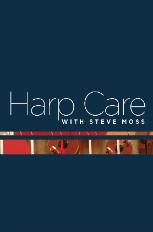In our last post, we talked about pre-screening harps and sellers by having a phone conversation and asking for additional photos of a harp you may be interested in buying. Sometimes, however, you might hear about a really good deal on a harp out in California but you live in South Carolina. What should you do?
In my opinion, you should have a knowledgeable person inspect it, or you should decide not to buy it. If you buy a harp that must be shipped to you, this will add to the cost of your purchase. If you receive it and find there’s something wrong with it, even if the seller agrees to take it back, there’s the cost of return shipping. The stakes are higher if you do business this way, and it is easier to end up with a harp you aren’t happy with.
So, who do I mean by a “knowledgeable person?” In most cases, this ideally means a technician like me, who is used to inspecting harps, knows what to look for, and knows how to spot repair issues that the seller might not even be aware of. If there is a technician in or near the area where the harp you’re interested in is located, or a technician is scheduled to visit, then you’re in luck. You can contact the technician and see if he or she is available to take a look at the instrument for you. There will certainly be a fee, but it could save you a lot of money if the technician is able to see something wrong with the harp. You can find certified technicians through the manufacturer of the harp you’re interested in.
Some harpists are also quite knowledgeable about structural and repair issues on harps, but some are not. If you know a harpist who happens to live near the harp in question, ask her if she feels comfortable having a look at the instrument. Even if she may not have the technical knowledge a technician has, she may be able to further assess the care the harp has received by looking first-hand at the harp and talking in person with the seller. She will be able to tell whether the harp is reasonably in tune, indicating that it has been cared for by a knowledgeable owner, or if it is way out of tune, which probably means it has been sitting neglected for a long time, and its strings will need to be replaced. A harpist will also be able to give you some good feedback on the harp’s sound, which is also a very important factor in determining what to buy.
Unfortunately, technicians don’t live or go everywhere, and one might not be around when you need one. If you don’t know a harpist who can look at and play the harp, and can’t get a technician, I would advise you to think about looking for a different harp. It may not be the advice you want to hear, but it could save you a lot of grief in the long run. However, if you’re willing to do more research and spend more time, and you really, really want to buy this harp and not some other one, check out the next post.



0 Comments